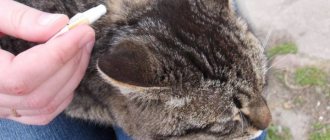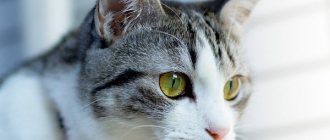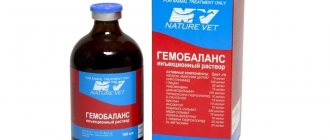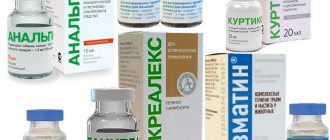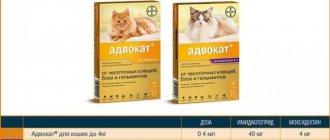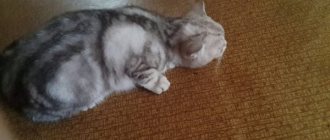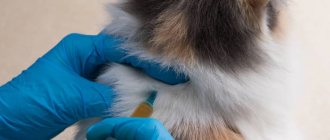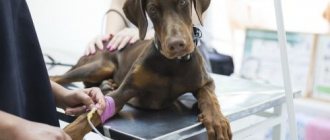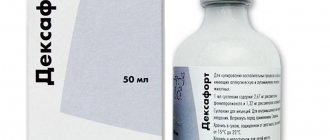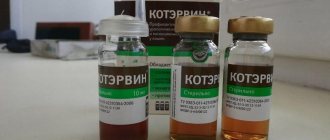Description of the drug
Enterosgel is an enterosorbent based on organic silicon. The active substance is polymethylsiloxane polyhydrate. And this is the essence of a molecular sponge that is capable of absorbing toxic metabolic products, that is, adsorption occurs selectively. Enterosgel binds and removes from the body endogenous and exogenous toxic substances of various natures, including bacteria and bacterial toxins, antigens, food allergens, medications, poisons, heavy metal salts, and alcohol. In addition, the drug is able to absorb some of the metabolic products: excess urea, bilirubin, lipid complexes, cholesterol. Moreover, polymethylsiloxane polyhydrate is not absorbed into the systemic bloodstream and works only in the intestinal lumen. It does not undergo chemical or metabolic transformations and is excreted with the substances absorbed into it 12 hours after ingestion. This means that Enterosgel is harmless and non-toxic, and does not affect the absorption of vitamins and microelements.
Enterosgel is used for vomiting
Enterosgel has enterosorbing, antidiarrheal, enveloping, detoxification, and regenerating properties. The drug improves the functional state of the intestines, kidneys, liver, normalizes the functions of the immune and hematopoietic systems.
All this reduces the treatment time for most diseases.
Enterosgel is not a panacea, but an aid!
On the Internet you can find reviews from pet owners who talk about how, with the help of Enterosgel, they cured a dog or cat from enteritis, bloody diarrhea, rotavirus or even coronavirus infection (infamous to all cat breeders, FIP). Methodologically, this formulation of the question is not entirely correct.
Enterosgel does not have antibacterial and antiviral activity, does not circulate in the animal’s blood and does not cleanse it of toxins. It works only in the lumen of the gastrointestinal tract. However, this work can be very effective and significantly increase the body's resistance to a sick pet. Freed from the need to neutralize toxins in the intestines and in the systemic bloodstream, the immune system directs all its forces to fight pathogens and has every chance of success.
Unfortunately, in the case of FIP, which occurs in a malignant form with ascites and damage to all abdominal organs, as a rule, neither Enterosgel nor other detoxicants help - the prognosis for this disease is still unfavorable. Fortunately, the deadly coronavirus is not transmitted to people and dogs.
Enterosgel is ineffective for acute poisoning with caustic liquids. If an animal accidentally swallows an acid or alkali, the chemical agent must be neutralized as quickly as possible - with baking soda or vinegar, respectively, and then urgently take the injured pet to the clinic for treatment of burns of the esophagus and stomach. The PH reaction of Enterosgel itself is neutral; it has no effect on caustic media.
In the same way, the gel will not help with poisoning with potent agents - cyanide, rat poison (rodenticide), garden fertilizers, organic solvents, antifreeze, etc. Here, first of all, you need to induce vomiting and gastric lavage. The easiest way to induce vomiting in a pet is to pour a 3% solution of hydrogen peroxide into the mouth.
The recommended dose is a teaspoon per 5 kg of animal weight, but in emergency cases it is usually not time to take measurements; the peroxide will still come out. The main thing is to cleanse the stomach as quickly as possible and save your pet from the most dangerous poison. Only later, when the bulk of the poison has been removed, the animal can be given Enterosgel.
Indications
Enterosgel is often used in gastroenterology, allergology, nephrology, obstetrics and gynecology, pediatrics, and toxicology as a treatment for conditions in which intoxication of the body is observed. Thus, the indications for use of Enterosgel are:
- chronic kidney diseases (including pyelonephritis, glomerulonephritis, polycystic kidney disease, azotemia);
- burn disease in the intoxication phase;
- purulent-septic pathology, accompanied by significant intoxication of the body;
- toxicosis during pregnancy;
- allergic diseases (allergic rhinitis, bronchial asthma, food allergies, acute or chronic urticaria);
- skin diseases (atopic dermatitis, acne vulgaris, eczema);
- ARVI;
- radiation injuries;
- acute/chronic diarrhea of any nature (including viral, bacterial, occurring due to food poisoning or after treatment with antibiotics, associated with chronic inflammatory bowel diseases, malabsorption syndrome, etc.);
- poisoning with toxic and potent substances, including drugs, alcohol, salts of heavy metals;
- acute and chronic poisoning of the body, including food poisoning;
- intestinal syndrome caused by allergic food intolerance;
- acute intestinal infections of any origin (viral, bacterial infections)
- for toxic-infectious liver damage (including viral hepatitis types A and B, toxic hepatitis);
- with cholestasis of various origins;
- with cirrhosis of the liver;
- with hypo- or hyperacid gastritis;
- for peptic ulcer of the duodenum and stomach;
- with enterocolitis;
- with ulcerative colitis;
- with irritable bowel syndrome;
- with post-resection syndrome;
- during the periods before and after operations on the gastrointestinal tract.
For people who do not suffer from gastrointestinal problems to one degree or another, Enterosgel can be prescribed for the prevention of ischemic heart disease, atherosclerosis, for chronic intoxication in those employed in hazardous work, living in environmentally unfavorable regions, as well as for preventive cleansing of the body.
Purpose
The medicine can be used for poisoning as an emergency treatment. It is used in symptomatic therapy for loose and frequent stools in cats. Nausea and vomiting, as well as intestinal upset, expressed in diarrhea, are responses of the animal’s body to irritants: poor-quality food or allergenic food, to pathogens and their toxins, to antigens of intestinal parasites, etc. The best remedy for removing toxins is sorbents. Enterosgel contains organic compounds and is therefore safe for animals.
Vomiting is a symptom of diseases of the internal organs - the gastrointestinal tract, liver, kidneys. It, like diarrhea, is dangerous because it can lead to dehydration, so if your pet is vomiting, you can give Enterosgel to your pet.
The causes of digestive disorders in domestic cats can be different. Vomiting and diarrhea can be caused by poisoning. First of all, this danger awaits animals living on the street or walking on their own. However, even for those pets who do not strive outside the apartment, there are many dangers: clean cats, while licking themselves, can swallow a chemical substance that has gotten into their fur, or taste a poisonous houseplant or flower treated with pesticides.
The danger comes from household chemicals, medicines, insecticides and herbicides, zoocoumarins (rodent repellents), and low-quality anthelmintics. If a cat is poisoned, the following symptoms may occur:
- nausea and vomiting;
- frequent loose, sometimes foul-smelling stools;
- refusal to eat;
- increased thirst;
- impaired coordination of movements.
Allergies can cause a negative intestinal reaction. Many cats suffer from individual lactose intolerance, so experts do not recommend giving cats cow's milk.
Worms pose a great danger to domestic cats. They damage internal organs, disrupt metabolic processes in the body, and when there is a large accumulation of parasites in the intestines, the toxins released by them lead to severe intoxication of the body. Without treatment, the pet may die, but even the use of anthelmintic drugs can cause negative consequences - with the mass death of parasites, a large amount of toxins is released. Enterosgel allows you to eliminate the negative consequences of deworming.
With gastrointestinal pathologies, lipid metabolism is disrupted, the volume of uric acid produced increases, which can also lead to intoxication of the body. Diarrhea also accompanies diseases of other internal organs - with renal failure, the ability of the kidneys to remove harmful substances from the body with urine is impaired, and in some cases completely lost. However, one sorbent for chronic renal failure will not be enough; it is used only as a means of symptomatic therapy.
Diarrhea can be a symptom of infectious diseases, food changes, stressful situations - for example, a visit to the veterinary clinic or a change of home, a long trip, or the arrival of a new pet in the house. In the latter cases, the unpleasant symptom usually goes away after eliminating the stress factors, but the medicine will help to quickly cope with intestinal dysfunction.
In kittens, diarrhea occurs quite often, especially during the period of weaning from the mother cat and transfer to “adult” food. Warning symptoms are loss of appetite or complete refusal to eat, lethargy, depression, weakness, fever, dull eyesight, nasal discharge, foul-smelling stool. These are signs of dangerous infectious diseases that require immediate contact with a veterinary clinic.
Important!
Enterosgel can also be used externally if a toxic substance has come into contact with your pet’s skin, causing a burning sensation or pain. However, you should consult your veterinarian before doing this.
Contraindications
Even though Enterosgel does not penetrate the systemic bloodstream and does not stick to the walls of the digestive canal, it has a number of contraindications:
- peptic ulcer of the duodenum or stomach in the acute stage;
- morphophysiological disorders in the gastrointestinal tract of various types (intestinal atony, acute gastric dilatation syndrome, etc.);
- hypersensitivity to Enterosgel components;
- bleeding from the gastrointestinal tract.
Side effects
Enterosgel is well tolerated, but this does not eliminate the possible occurrence of adverse reactions. Thus, taking the drug can cause nausea, periodic vomiting, and in the first days there is a possibility of developing constipation. In case of functional renal or liver failure, a feeling of aversion to the drug may occur.
Side effects
Occasionally, animals experience constipation or nausea, and in case of complex liver or kidney failure, a categorical refusal to take the medication. There are no side effects in case of overdose. The medication can be used for complex treatment, combined with other medications, provided that the time interval between doses is observed (2 hours).
How to take Enterosgel
Enterosgel in any dosage form is taken orally 2 hours before meals or medications, or 2 hours after.
Enterosgel paste is completely ready for use. It should be taken with enough water. But an aqueous suspension is made from Enterosgel in gel form before taking it. To do this, the required amount of gel is ground in a quarter glass of water, then taken with water.
Enterosgel paste is washed down with water.
Therapeutic course:
On average, the duration of the therapeutic course is 7-14 days. To prevent chronic intoxication, it is necessary to take 22.5 g (1 packet) 2 times a day for 7-10 days monthly. If the intoxication is pronounced, then the doctor may decide to double the dose in the first 3 days of therapy. After stabilization of the condition, they switch to the average therapeutic dosage. After the symptoms of acute intoxication or intestinal infection disappear, the drug is used for several more days.
For obstructive jaundice and liver cirrhosis, it may be prescribed for a longer period of time (2 months or more).
Repeating the course of treatment is permissible only after the recommendation of the attending physician.
Thus, the instructions for use of Enterosgel give the following dosages:
The daily dose (45 g for adults and 30 g for children) is divided into 3 doses. The duration of treatment is determined individually and depends on the severity of the disease and the age of the patient.
- single dosage – 1 tablespoon (15 g) – for adults;
- children under 3 years old – 1 teaspoon (5 g) 2 times a day (daily dose – 10 g);
- children 3-5 years old – 1 teaspoon 3 times a day (daily dose – 15 g);
- children 5-14 years old - 1 dessert spoon (10 g) 3 times a day (daily dose - 30 g).
Prevention:
For preventive purposes, adult patients are prescribed the following dosage regimen:
- prevention of ischemic heart disease and atherosclerosis - 1-1.5 months three times a day, 1 packet;
- prevention of chronic poisoning of the body - 7-10 days, twice a day, 1 packet;
- body cleansing - 10-14 days, three times a day, 1 packet (the cleansing course is repeated 3 to 6 times during the year).
For diarrhea:
You should immediately take 2 standard single doses of Enterosgel. In the future, the drug is taken 1 standard dose after each bowel movement. After the stool returns to normal, the drug is taken in an age-appropriate dosage for another 5 days.
It is important to remember that diarrhea cannot be treated with sorbent alone. It is necessary to find out the source of the disease and begin comprehensive drug treatment. After all, diarrhea can be infectious or non-infectious. A doctor can determine the cause of diarrhea.
When vomiting:
Enterosgel is taken when vomiting, as it usually indicates intoxication of the body. In case of acute poisoning, the dose of Enterosgel can be doubled for the first three days. After this, you should take the standard therapeutic dosage - 1 packet or 1.5 tbsp. spoons 3 times/day. On average, in case of poisoning, the therapeutic course lasts 10 days. The drug must be taken immediately after vomiting has stopped. If there is a series of attacks, then in the interval between them. It is worth noting that Enterosgel is contraindicated if the cause of poisoning is caustic substances (acids or alkalis), some solvents (for example, ethylene glycol or methanol), or cyanides.
Important! For diseases that are accompanied by fluid loss (vomiting, diarrhea), the use of Enterosgel should be supplemented with rehydration solutions that replenish the deficiency of electrolytes. This is necessary to avoid dehydration and subsequent complications. To replenish the volume of lost fluid and electrolytes, you should purchase specialized drugs at the pharmacy: Regidron, Trisol, Gidrovit, Reosolan, Gastrolit, Humana Electrolyte, etc.
Your doctor will help you choose the required dosage and frequency of administration.
How to treat with Enterosgel
Since the sorbent is odorless and tasteless, cats do not show any desire to swallow it themselves, but they do not categorically reject it. A little persistence with a certain amount of accuracy and the cat will definitely eat this life-saving piece of medicinal substance. The dosage is determined according to the weight of the animal. In case of severe poisoning, a double dose must be given.
There are several ways to give Enterosgel to a cat. Mix it into everyday cat food or treats. But in this case, you will have to carefully monitor the complete use of the drug.
Another method is more effective. Giving your cat liquid medications is simple. It is necessary to dilute the required amount of the drug with boiled water at room temperature, mix and draw into a syringe, after removing the needle. Then carefully insert the tip of the syringe into the corner of the cat’s mouth and gradually, gently pressing the plunger, introduce Enterosgel. The muzzle should be raised up and the throat should be stroked, making sure that the solution is swallowed. For a small kitten, half a teaspoon of the drug is enough, given only once a day, but this is for minor and short-term diarrhea.
You can squeeze the sorbent onto a disposable spoon, dilute it slightly with water and give it to your cat . If the animal is not in the mood and does not want to take it, then you need to place the required dose of sorbent on the tip of your finger and, opening the cat’s mouth, smear it across the palate. Next, you need to hold your pet’s head and make sure that the medicine is swallowed.
Enterosgel during pregnancy and lactation
The annotation for the drug states that taking Enterosgel during pregnancy and breastfeeding is not contraindicated. Thus, the drug is prescribed to reduce the severity of toxicosis, in case of fetoplacental insufficiency (placental dysfunction), for the treatment of acute and chronic bacterial, viral or fungal vaginal infections.
Enterosgel is not contraindicated during pregnancy
Storage conditions and shelf life
Enterosgel has a shelf life of 3 years.
Store the medicine at a temperature not lower than +4 degrees and not higher than +30 degrees, do not freeze. I recommend protecting the packaging from drying out after it is opened.
Under no circumstances use the medicine after the expiration date indicated on the package has expired.
Enterosgel has a shelf life of 3 years
Enterosgel for children
The drug is well tolerated and safe for children. The paste/gel (without sweetener) can be given to a child from birth.
The drug is absolutely harmless for children
For infants and toddlers, Enterosgel is mixed with three times the volume of liquid before use: water or breast milk. Older children can simply drink the paste/gel with water.
According to the instructions, the dosage of Enterosgel for children depends on age:
- from 0 to 12 months: 1.7 g (1/3 teaspoon) 6 times / day. The daily dose should not exceed 10 g;
- from 12 months to 5 years: 15-30 g/day. dividing the dose into 3 doses;
- after 5 years: gel/paste take 30-45 g/day, dividing the dose into 3 doses.
Entero Zoo for kittens
A newborn kitten is cared for by a cat and information about the animal’s defecation is not available to humans. Upon reaching the age of one month, the grown-up fluffy switches to a mixed diet and goes to the toilet on his own. The baby may have problems similar to human ones. A kitten may develop diarrhea due to dysbiosis or an unbalanced diet. A small animal can become infected with an intestinal infection or be poisoned by substances unsuitable for feeding. The baby explores the world around him and is able to get to the most inaccessible places where substances not intended for consumption are stored.
In addition, upon reaching 1.5 months of age, kittens are treated for worms. After the parasite cleansing procedure, it is advisable to use enterosorbent to stabilize the gastrointestinal tract and eliminate pathogenic waste products of parasites.
Enterosgel and alcohol
The active ingredient of Enterosgel - polymethylsiloxane polyhydrate - effectively binds alcohol and its breakdown products located in the gastrointestinal tract, and also helps to reduce their concentration in the blood.
Taking the gel protects the liver and helps it recover quickly after alcohol poisoning.
For a hangover, to speed up the removal of alcohol from the body, take 3-4 tbsp. spoons of gel/paste immediately after drinking alcohol and the same dose in the morning.
To avoid a hangover, you should drink:
- 15 g after drinking alcohol;
- 15 g in the morning;
- 7.5 g per day (if hangover symptoms have not been completely eliminated).
The principle of action of the drug Enterosgel for cats
The product has detoxifying and adsorbing effects. Enterosgel contains polymethylsiloxane polyhydrate. The active component absorbs medium molecular toxic metabolites and promotes their removal from the digestive tract. After using the paste, waste products of bacteria, food allergens, drug residues, poisons, and toxins are removed from the body. Enterosgel for a kitten with diarrhea will help prevent dehydration, restore the functioning of the gastrointestinal tract, get rid of diarrhea and other unwanted symptoms.
Enterosgel for allergies
As for the use of Enterosgel for allergies, monitoring of patients indicates a noticeable improvement in their condition. Thus, with bronchial asthma, the patient’s condition improves by the 3rd day of treatment, and after 2 weeks breathing returns to normal.
For allergies that are associated with disorders of the digestive system, the use of Enterosgel helps remove toxins from the body, restore intestinal function, and also helps prevent erosion. Improvements are observed already on the 4-5th day of using the drug.
Enterosgel for allergies
Enterosgel is used to treat eczema. It takes 6 days to eliminate fresh rashes.
Using the drug for the treatment of atopic dermatitis allows you to extend the period of remission to 8 months (usually remission lasts no more than six months).
Composition and release form of Polysorb
The company producing the product is Polysorb CJSC. Polysorb is a white or bluish powder, odorless and tasteless. Packaged in jars (50 and 100 g) or bags (1-12 g).
The following data is recorded on each package:
- company;
- location;
- quality mark;
- name of the medication;
- marker “for animals” (for products of the VP category);
- weight;
- batch number;
- date of manufacture;
- best before date;
- storage conditions.
The container with the medicine contains instructions for use. A doctor's permission is not required to purchase the product.
Analogs
Enterosgel is a safe, universal in pharmacological properties and action, and a well-proven sorbent. However, cost or allergies to the components of the drug may force the patient to look for a cheaper but effective analogue.
The same pharmacological group with Enterosgel includes: Activated carbon, Diosmectite, Lactofiltrum, Lignosorb, Carbosorb, Microcel, Sorbex, Neosmectin, Polysorb MP, Polyphepan, Smecta, Filtrum-STI, Entegnin, Enterodes, Ultra-adsorb, Enterosorb, Enterumin, Enterosorbent SUMS -1.
Polysorb MP is the most common replacement for Enterosgel. It also adsorbs metabolic products and toxic substances, and also increases the ability to restore tissue. It is based on silicon dioxide. Polysorb, like Enterosgel, does not injure the mucous membrane of the digestive tract. Unlike Enterosgel, Polysorb is available only in powder form, which is used for external treatment of pustular skin diseases and wounds, as well as for preparing a suspension for oral administration. Its only side effect may be constipation. It is also contraindicated in patients with acute inflammatory processes in the gastrointestinal tract. In this case, Enterosgel can be used as prescribed by a doctor.
Remember that analogues may have similar properties and effects. But they have their own indications for use, daily dosage, and list of adverse reactions. That is why only a doctor can prescribe or replace one drug with another.
Kitten has diarrhea
It is common for a kitten to have soft stools at an early age. The body adapts to a new diet and lifestyle, and intestinal function improves. But loose stools are dangerous, first of all, due to dehydration, which can lead to death in a short time.
You should be wary when defecation occurs in a “stream” or liquid feces have a green color or a sharp sour smell. The owner should be concerned about bloody spots or black stools (which is evidence of internal bleeding). The disease may be accompanied by bloating, flatulence, lethargy or excessive anxiety, and fever.
Diarrhea may last for several hours or days. For a kitten in dangerous situations, the clock counts. To provide timely assistance to the baby, you should immediately give a dose of Entero Zoo or Enterosgel, but you should definitely show the animal to the veterinarian.
Enterosorbent has a clear advantage: it will not blur the clinical picture. The veterinarian diagnoses the disease and prescribes the necessary treatment. Due to the absence of color and odor, Enterosgel does not change the color of stool, which is very important when making a diagnosis; the consistency and color of the stool is the most important symptom.
Entero Zoo is given to the kitten in accordance with the scheme given above. In the absence of a specific enterosorbent for animals, you can use Enterosgel, purchased at a regular pharmacy.
“Human” Enterosgel is given to animals, just like a veterinary drug. Half a teaspoon is enough for a kitten. Enterosgel should be diluted with water to a semi-liquid state and inserted into the mouth using a plastic syringe, since the kitten will not lick and swallow the drug on its own.
Will Enterosgel help with the anthelmintic procedure?
Helminths
It would seem, how can a drug like Enterosgel help in the anthelmintic procedure? But in fact, anthelmintic drugs have a strong effect, including on intestinal function. In addition, after expelling excess inhabitants from the kitten’s body, it would be nice to get rid of their waste products.
Enterogel will help to remove harmful substances and remnants of worms from the body, and will help restore normal functioning of the gastrointestinal tract.
Many fear that this drug will negate the effect of anthelmintics. However, if everything is done correctly, the anthelmintic and the sorbent simply will not interact. To achieve this effect, the gel is given 4-5 hours after the anthelmintic tablet.
Recommendations from breeders:
Svetlana: I met enterosgel during the New Year celebration. It was like this, during the feast we ate smoked carp, and guests often treated my Barsik to fish. In the morning he began to diarrhea heavily, and by the evening he stopped eating altogether. Therefore, the very next day I went to the clinic. The specialist prescribed enterosgel for us, and after 3 hours I noticed that the pet felt much better. Excellent drug at the best price, I recommend it to everyone.
Valentin: I always keep a tube of enterosgel in the refrigerator, because once there was a case when my cat was poisoned by an antihistamine. Barsik lay there for the second day and practically did not get up. A friend of mine recommended enterosgel, and it really helped, perhaps even saved my cat’s life. Now I buy this drug in the form of a gel, although I have to pay a little more, but it can be used immediately. I recommend that all cat owners keep cats in their home, as it always saves them from poisoning.

